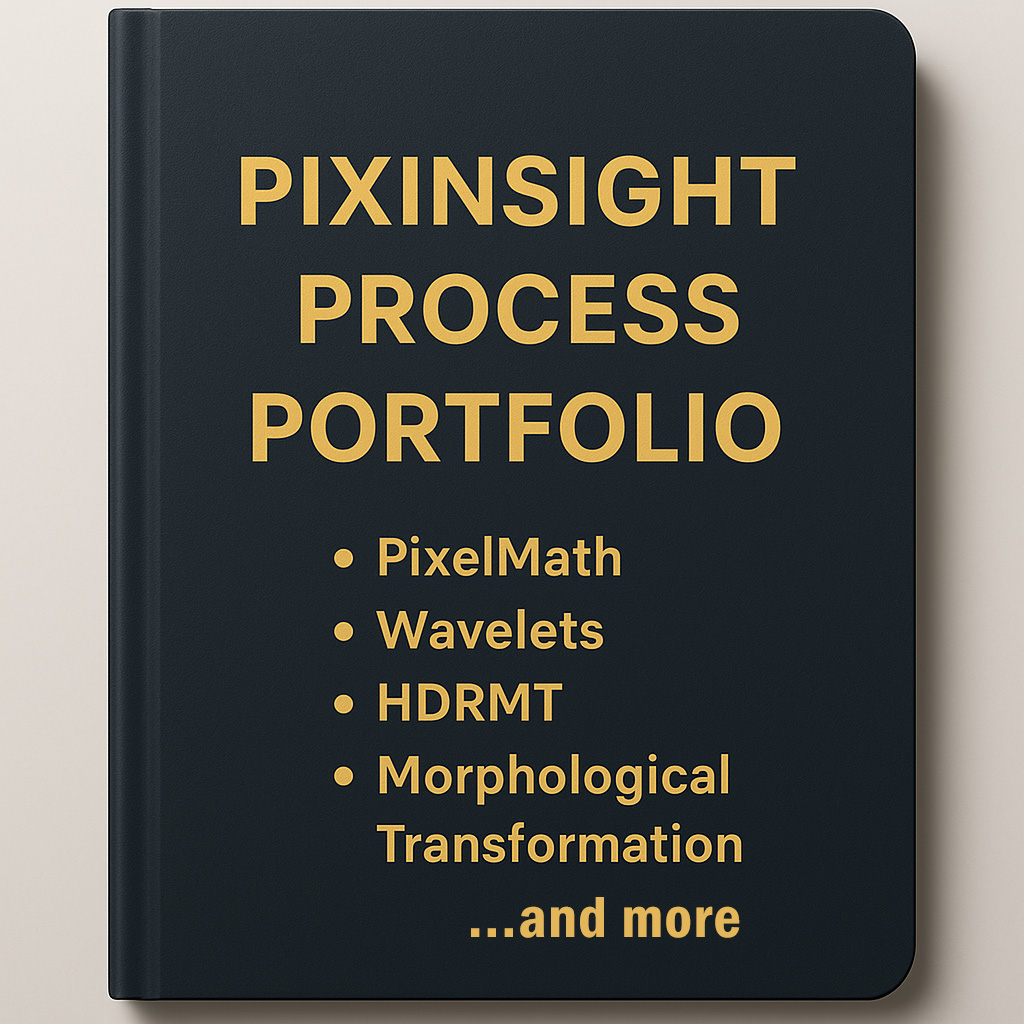PixInsight Process Portfolio
$50.00 8 Sections 38 Lessons
Course Description
A hands-on guide to understanding and applying PixInsight's essential tools as a curated set of PixInsight’s most important and widely used processes.
This isn’t just button-pushing—each topic is designed to give you both the practical know-how and the underlying concepts that drive better, more confident processing decisions.
From the numerical power of PixelMath to the structure-enhancing power of wavelets (via MLT and MMT), and from HDRMT and Morphological Transformation to smart usage of tools like SubFrameSelector, LinearFit, and Process Containers, this course connects the dots between tools, theory, and technique.
Whether you’re still learning your way around PixInsight or looking to sharpen your understanding of how these processes really work, the Portfolio is packed with useful demonstrations, thoughtful explanations, and real-world context.
Course Content
Pixel Math
Recommended Path to View Lessons
An Introduction to PixelMath
Useful Pixel Math
Pixel Math is NOT scary! : Crosshairs (two videos)
Image/Preview Insertion
Gradients (Linear and Circular)
Elliptical Gradients
Checkboard Puzzle
Image and Process Containers
Image and Process containers are grouped together in this category because they both enable batch operations. In addition History States are also covered in this section since they are a special form of a process container.
Image Container
Process Containers and History States
Image Containers with Process Containers
MLT and MMT
Pixinsight uses the mathematical tools of multiscale signal processing through wavelets in many of its processes. Few other processing programs make this such an important component of the fundamental way images are accessed and manipulated. The following lessons introduce some basic concepts about image signal processing and Fast Fourier transforms (FFTs). An understanding of how operating in the frequency domain can be a powerful way to process astronomical images leads to the concept of Wavelets. Unlike FFTs, wavelets yield frequency information at various spatial scales that map to image structures which are of great interest to an astroimager. By operating on information in the Wavelet domain, many interesting image enhancements and noise reductions can be accomplished that would otherwise by too tedious or impossible to do in any other way.
Introduction to Signal Processing
Fast Fourier Transforms leading to Wavelets
Introduction to MLT
Using Bias to Enhance
Using Noise Reduction
Differences between MLT and MMT
HDRMT
HDRMT Lagoon Nebula (Simple Example)
HDRMT Usage (NGC 2022)
HDRMT with Pixel Substitution (NGC 4691)
HDRMT complex Example (NGC 5866)
Inverted HDRMT Example (Eclipse with Earthshine)
HDRMT Artifacts (Comets)
Linear Fit
Linear Fit: Part 1 (Theory)
Linear Fit: Part 2 (Practical Examples)
Linear Fit: Part 3 (Batch)
Linear Fit: Part 4 (RGB Lightness Technique)
Linear Fit: Part 5 (RGB Color Balance Screed)
Morphological Transformation
Morphological Transformation Part 1
Morphological Transformation Part 2
SubFrameSelector (SFS)
SubFrameSelector: Part 1
SubFrameSelector: Part 2
SubFrameSelector: Part 3
SubFrameSelector: Part 4 ("Advanced")
Common Processes
Color Saturation
SCNR
Noise Generator
To Screen or Unscreen
